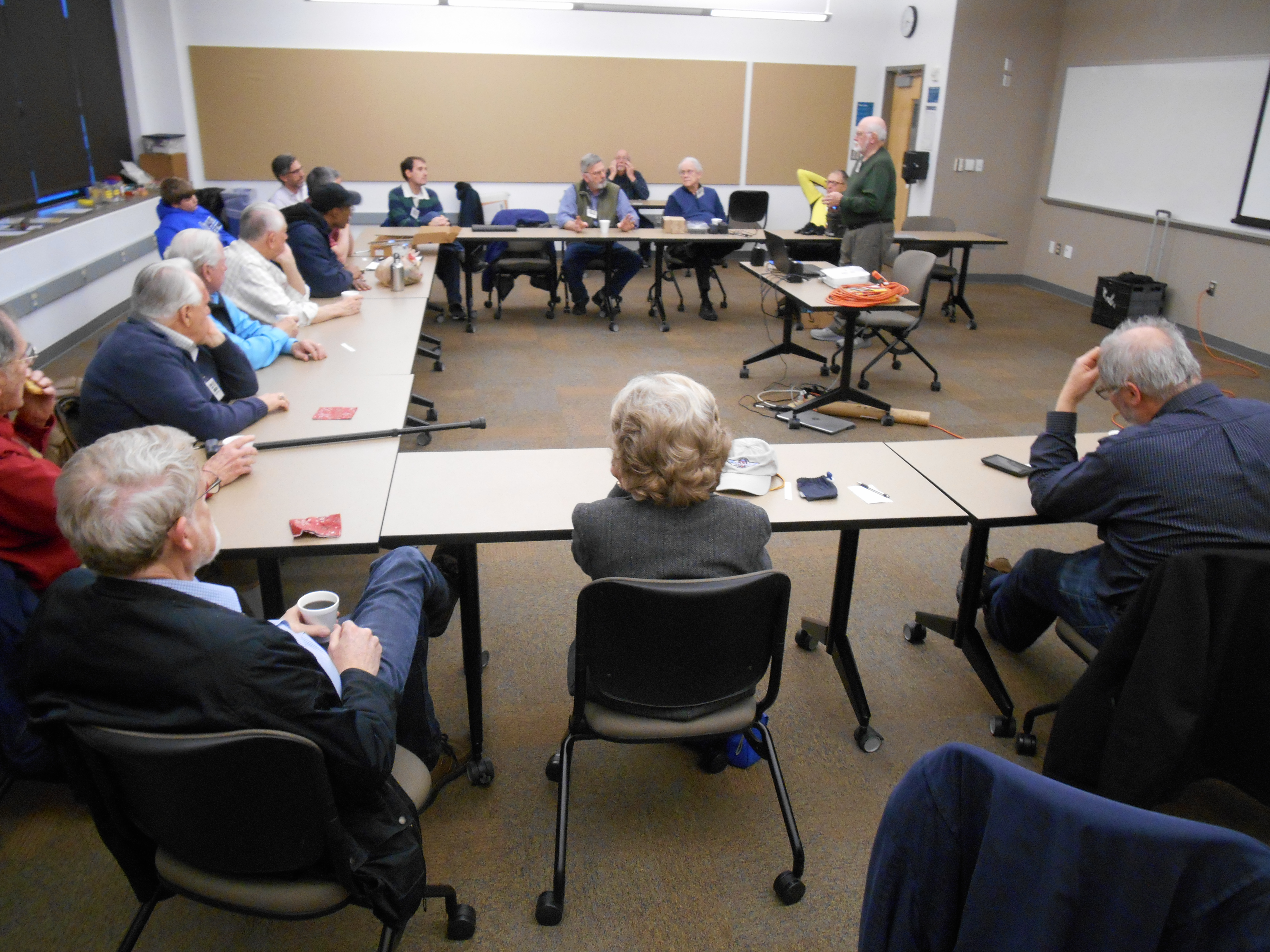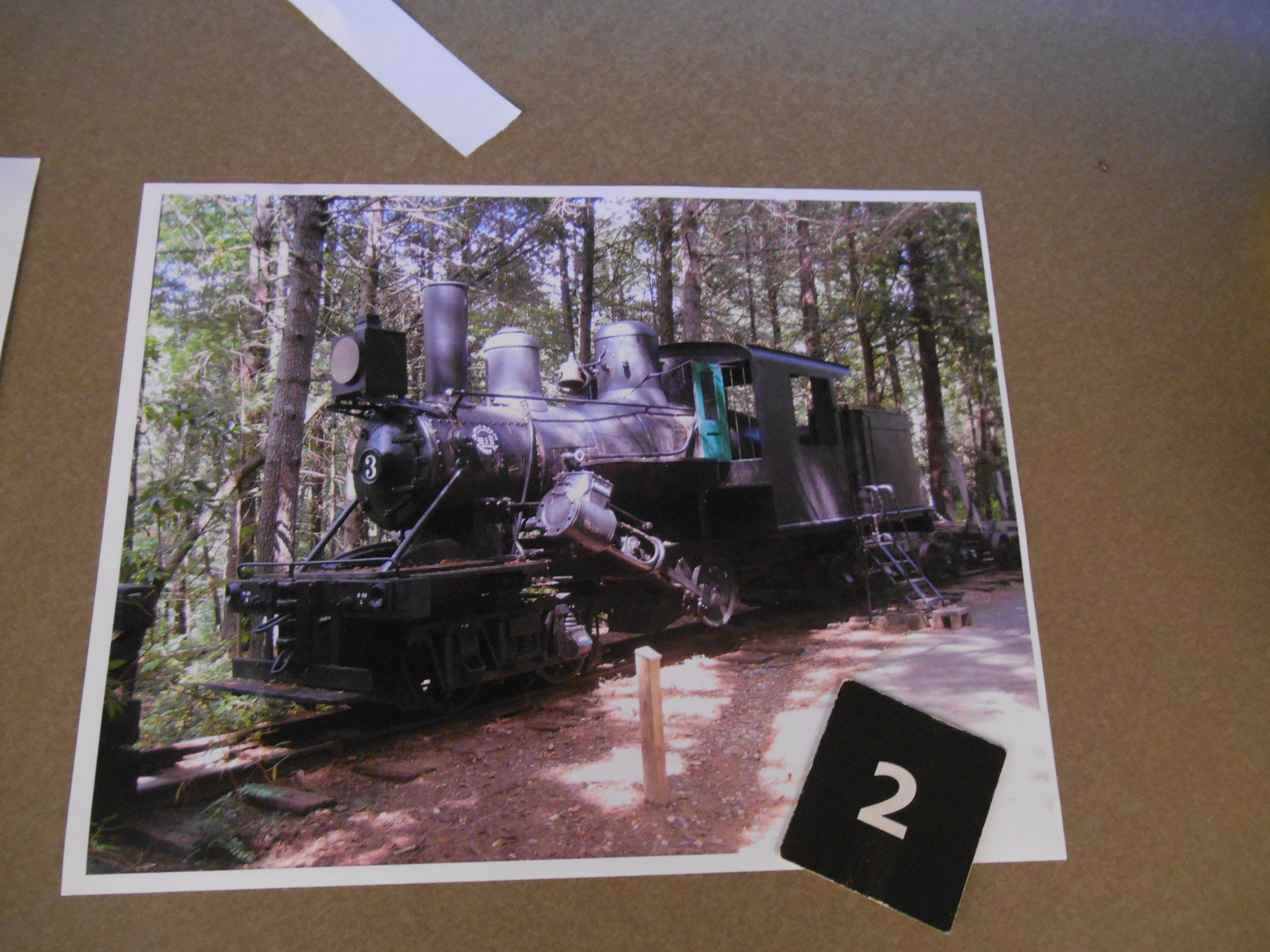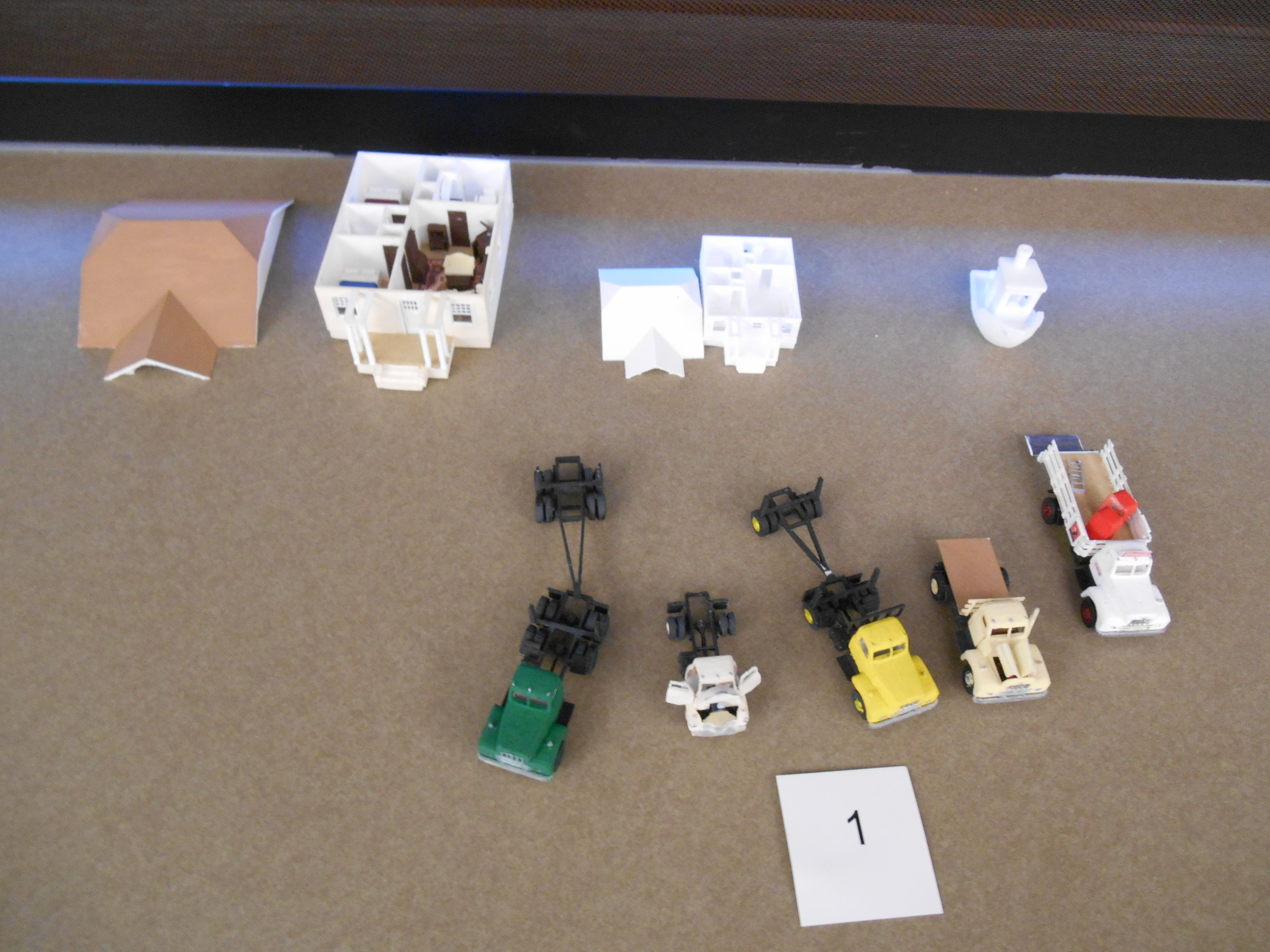by Syd Schofield
The Ides of March 2018 National Model Railroader Association Pacific Northwest Region 4th Division Redmond, East Side Get-Together, Clinic commenced at 7:15 Thursday evening at the Lake Washington Institute of Technology, second floor, 6505 176th Ave. N.E, Redmond, next to Marymoor Park. Russ Segner stood in for the temporarily absent Alex Brikoff to manage the gathering and programs.

After introduction of guests and visiting dignitaries, announcements and upcoming events of interest, the group took a short break before the evening program, Bring and Brag and door prize drawings.
C. J. Turner and Didrik Voss gave a presentation on 3-D printing and the supporting software management. The process described is heavily dependent on personal computing, guidance of robotic machinery and the deposition of a heated plastic extrusion to build objects.
C. J. showed how software files describing objects can be imported to the many available in several formats. They can be altered to suit in several available software programs such as the ‘Google’ ‘SketchUp’. The “virtual” object to be printed is then transformed by a “slicing” program to make a computer numerical control (CNC) code file for the printing machine. The printing process uses a layered approach to deposit the long string of the heated “plastic” to form the object by adhering to the previous layer. He brought in several examples of models made by the process.
In the type of 3-D printing shown, the layers are built from a level base plate in successive “stories”, each the thickness of the extruded plastic string, hence the need for the desired object to be digitally “sliced” horizontally for the printing machine to build the object. Several different diameters, colors and mechanical properties of the building “filaments” are available as are different application precisions. The results are very promising for the modeler and within a reasonable cost and time spent.
Di also showed the application of the ‘SketchUp’ program to insert objects and terrain files into and modify the model railroad simulation program ‘Trainz’. That program can then be operated as a “flying” simulation with the customized terrain and objects. It even conjures up thoughts of a virtual model train layout, hopefully not to replace the “real world” hands-on activities, at least not any time soon.



No Comments Yet